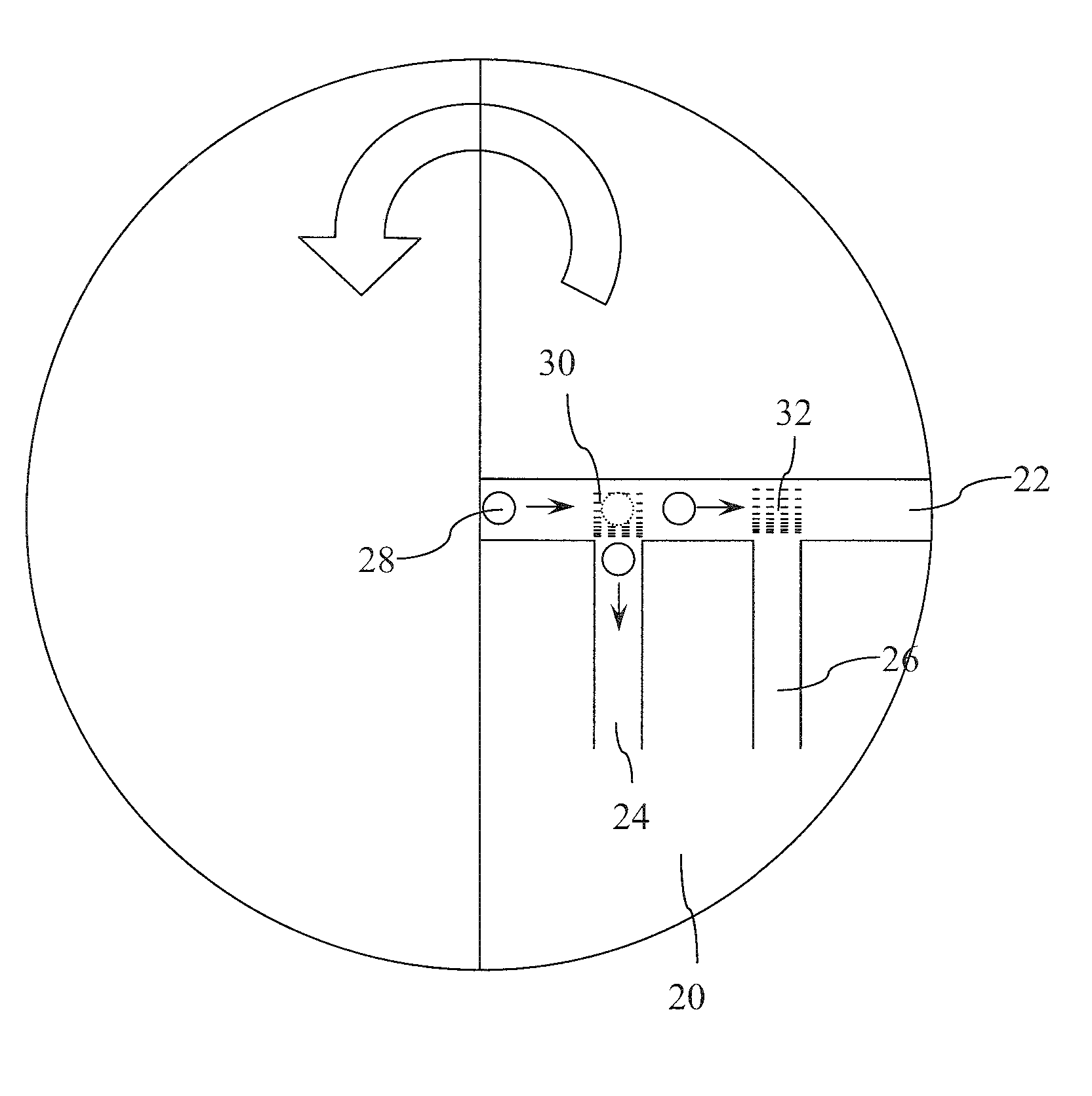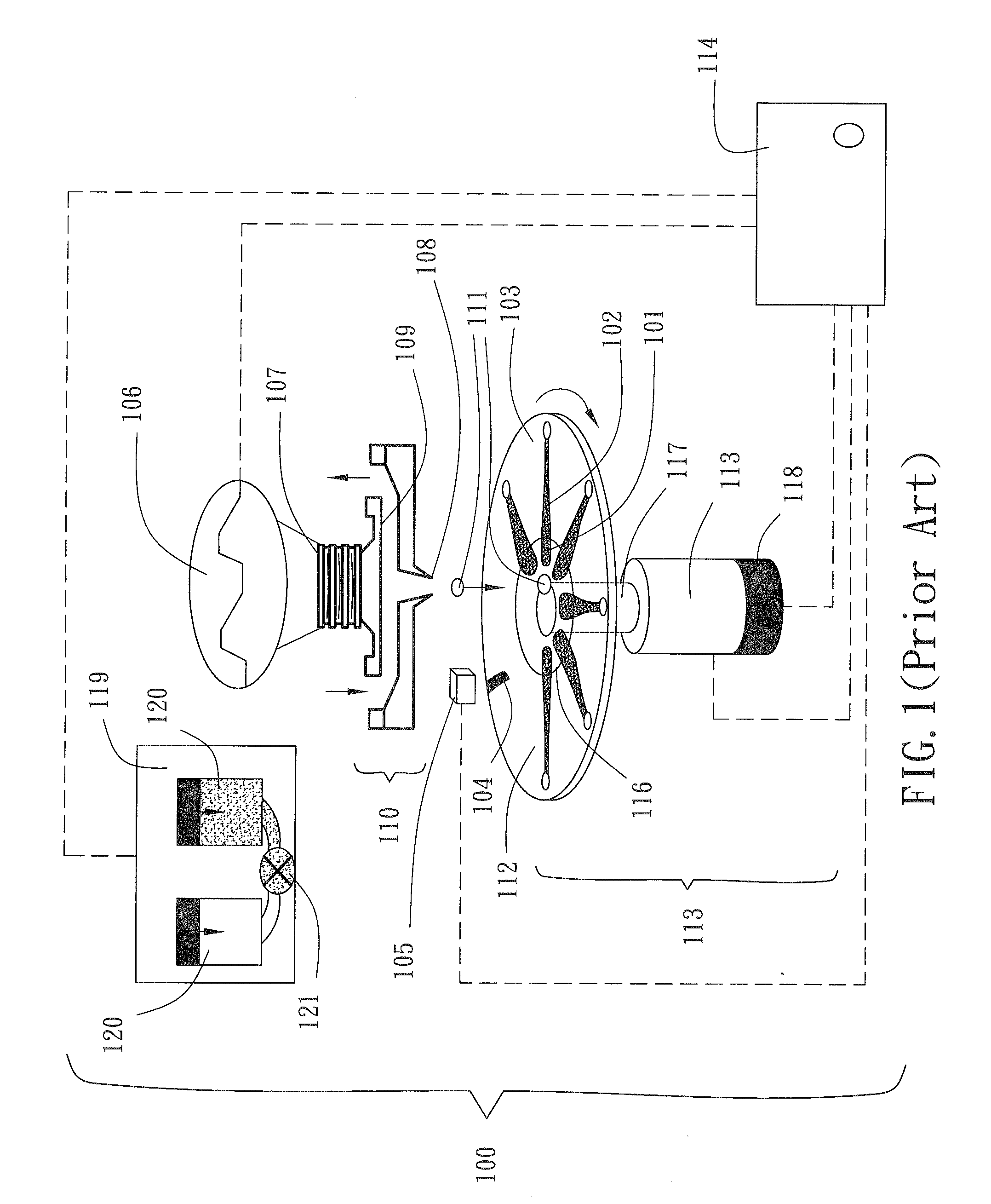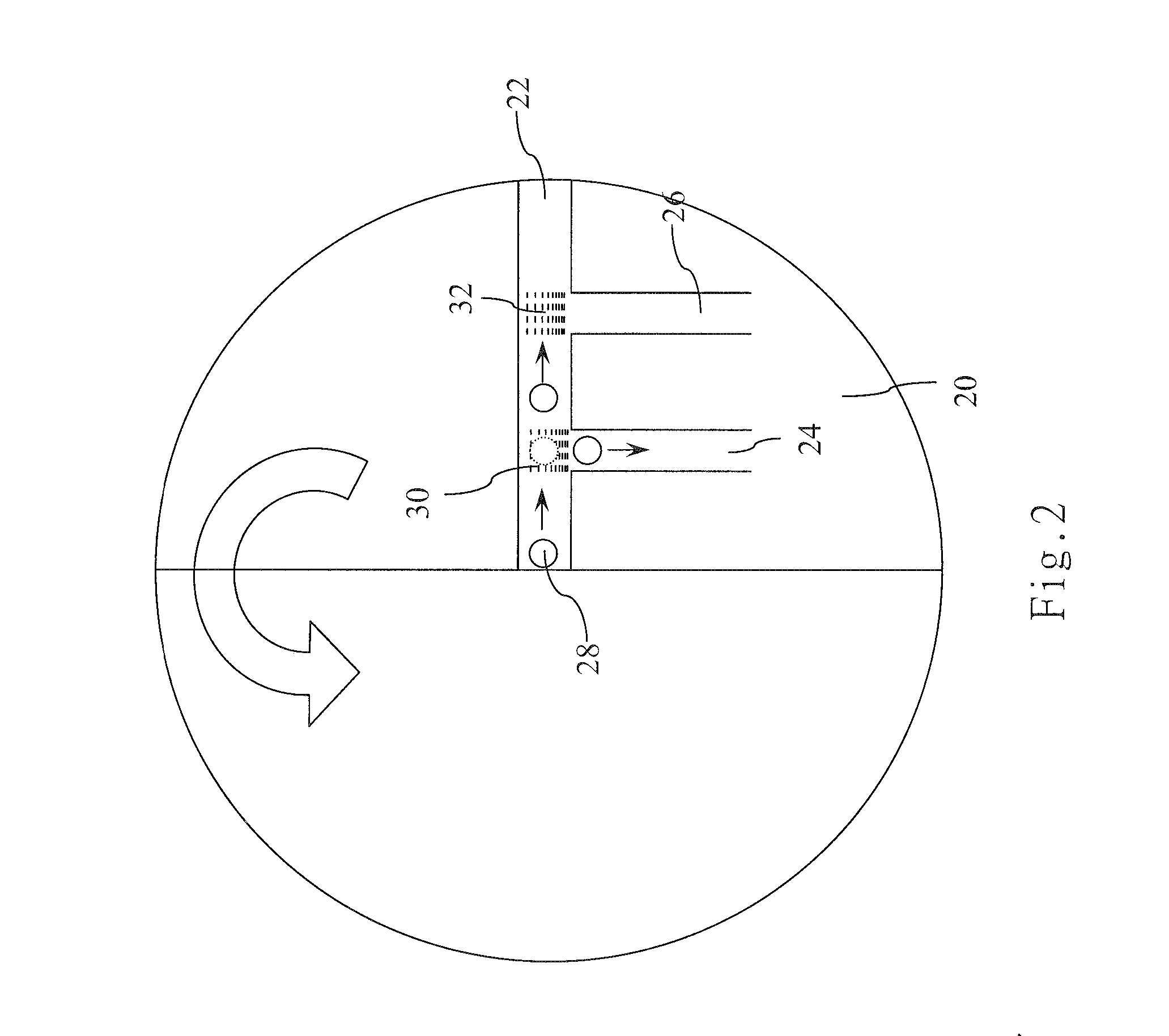Microfluidic separating and transporting device
a technology of microfluidics and transporting devices, which is applied in the direction of valve arrangements, laboratory glassware, thin material processing, etc., can solve the problems of consuming more energy, affecting the application of microfluidic systems, and requiring high-precision signal control, so as to increase the test types of microfluidics, promote the microfluidic mixing efficiency of biological chips, and simplify the transport process of microfluids
- Summary
- Abstract
- Description
- Claims
- Application Information
AI Technical Summary
Benefits of technology
Problems solved by technology
Method used
Image
Examples
Embodiment Construction
[0018] The present invention utilizes a physical or chemical method to fabricate density-variation surface energy gradient microstructures, i.e. rare-to-dense microstrip patterns, which create different surface tension gradients between microfluids and the inner walls of the microchannels along the flowing direction of the microfluids to drive the microfluids to flow automatically. The microfluids flow to the bifurcation regions between the primary microchannel and the secondary microchannels spontaneously via the driving force of surface tension gradient. The bifurcation regions connect with the secondary microchannels having density-variation micro / nano structures, which enable the secondary microchannels to have different hydrophobias. Thus, when the microfluids flow to the bifurcation regions, they will respectively enter into the microchannels having their own hydrophobias. Thereby, the microfluids can be precisely and automatically separated and guided to the assigned secondar...
PUM
 Login to View More
Login to View More Abstract
Description
Claims
Application Information
 Login to View More
Login to View More - R&D
- Intellectual Property
- Life Sciences
- Materials
- Tech Scout
- Unparalleled Data Quality
- Higher Quality Content
- 60% Fewer Hallucinations
Browse by: Latest US Patents, China's latest patents, Technical Efficacy Thesaurus, Application Domain, Technology Topic, Popular Technical Reports.
© 2025 PatSnap. All rights reserved.Legal|Privacy policy|Modern Slavery Act Transparency Statement|Sitemap|About US| Contact US: help@patsnap.com



